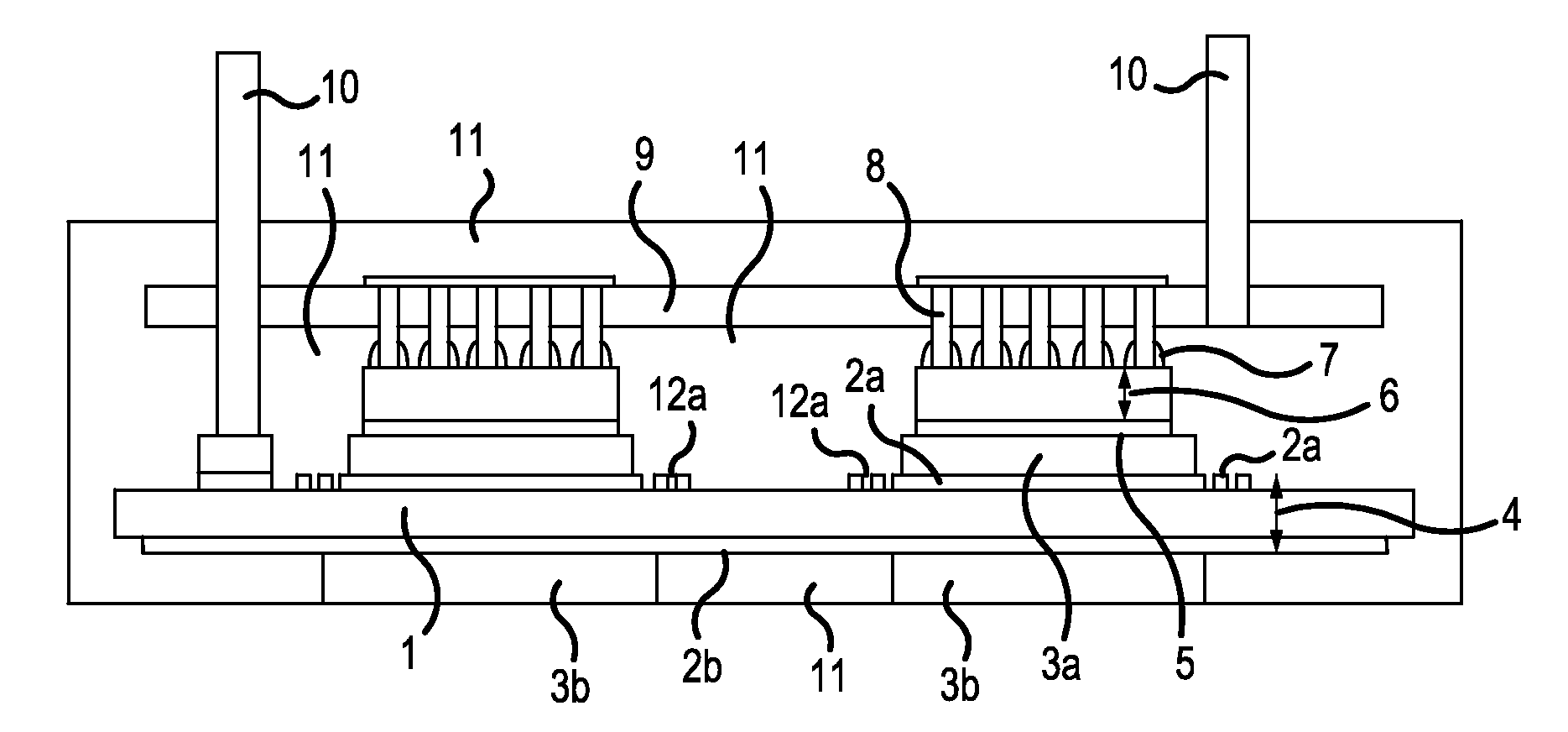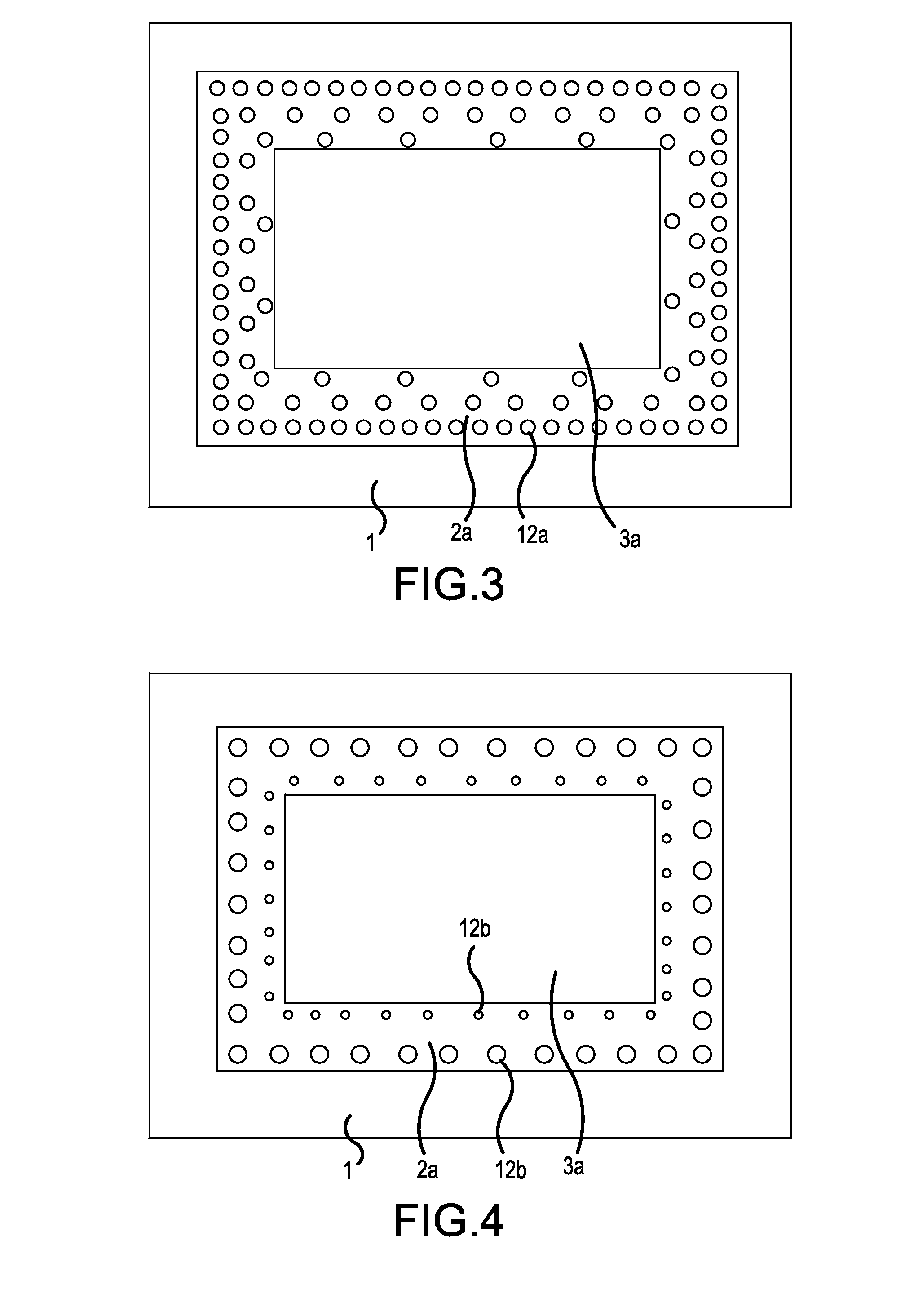Semiconductor device
- Summary
- Abstract
- Description
- Claims
- Application Information
AI Technical Summary
Benefits of technology
Problems solved by technology
Method used
Image
Examples
example 1
[0039]FIG. 1 is a cross-sectional diagram showing the principal parts of a semiconductor device according to a first example of the present invention. FIG. 2 is a plan view showing the principal parts of a DCB substrate shown in FIG. 1. In FIG. 1, a semiconductor power module, the semiconductor device, has a DCB (Direct Copper Bonding) substrate 4, which is a conductive-patterned insulating substrate configured by an insulating substrate 1 and copper circuit patterns 2a, 2b formed respectively on the front and back of the insulating substrate 1. This semiconductor module has copper blocks 3a fixed to the copper circuit patterns 2a of the DCB substrate 4 by diffusion bonding or the like, and copper blocks 3b fixed to the copper circuit pattern 2b of the DCB substrate 4 by diffusion bonding or the like. This semiconductor power module also has semiconductor chips 6 having the rear surfaces thereof soldered or the like onto the copper blocks 3a by bonding materials 5, conductive posts ...
example 2
[0047]FIG. 4 is a plan view showing the principal parts of a semiconductor device according to a second example of the present invention. This diagram is a plan view of the principal parts of the DCB substrate 4 configuring the semiconductor device. This plan view corresponds to the plan view shown in FIG. 2.
[0048]The difference with FIG. 2 is that the size (cross-sectional area) of each drill hole 12b is changed while keeping the number of drill holes per unit area unchanged. The same effect as that described in Example 1 can be achieved by forming small drill holes 12b in the vicinity of each copper block 3a and large drill holes 12b away therefrom.
[0049]In both Examples 1 and 2, the drill holes 12a, 12b are in a circular shape; however, the shape of the drill holes is not limited thereto. Thus, rectangular drill holes 12c may be formed, as shown in FIG. 5. Alternatively, both rectangular and circular drill holes may be present.
example 3
[0050]FIG. 6 is a plan view showing the principal parts of a semiconductor device according to a third example. This diagram is a plan view showing the principal parts of the DCB substrate 4 configuring the semiconductor device. This plan view corresponds to the plan view shown in FIG. 2.
[0051]The difference with FIG. 2 is that the drill holes 12a to be formed are changed to annular drill grooves 12d. The number of annular drill grooves 12d per unit length in the direction from each copper block 3a toward the outside is increased toward the outside (so that the grooves are disposed densely), to reduce the area of the copper in the vicinity of the ceramic away from the copper block and increase the area of the copper in the vicinity of the copper block. With this configuration, the same effect as that of Example 1 can be achieved. The same effect can be obtained even by expanding the widths of drill grooves 12e toward the outside, as shown in FIG. 7. Although not shown, the annular d...
PUM
 Login to View More
Login to View More Abstract
Description
Claims
Application Information
 Login to View More
Login to View More - R&D
- Intellectual Property
- Life Sciences
- Materials
- Tech Scout
- Unparalleled Data Quality
- Higher Quality Content
- 60% Fewer Hallucinations
Browse by: Latest US Patents, China's latest patents, Technical Efficacy Thesaurus, Application Domain, Technology Topic, Popular Technical Reports.
© 2025 PatSnap. All rights reserved.Legal|Privacy policy|Modern Slavery Act Transparency Statement|Sitemap|About US| Contact US: help@patsnap.com



